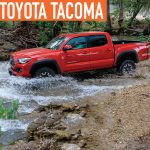November’s Industry Insight is taking another look at what’s going on in the world of transmission manufacturing. This portion of the industry is essential when it comes to meeting the varying demands of fleet owners, as well as complying with emissions regulations. Jeff Walker, director, Commercial Powertrain, Eaton Vehicle Group, discusses both what the company sees trending throughout the vocational segment, as well as how Eaton is working to meet and exceed growing and changing demands.
MWS: What have been the major changes in demand within the vocational market over the past couple of years, and how is Eaton working to meet these changing demands?
WALKER: Eaton believes the recent EPA Phase II ruling, which sets the level of greenhouse gas emissions reductions for vehicle manufacturers, will certainly have an impact on the Vocational segment. As OEMs look for cost-effective ways to meet these new requirements, suppliers—such as Eaton—will be asked to support their efforts with new and improved technologies. But there are existing technologies—such as Eaton’s Procision medium-duty transmission—that are available in the market today that can help OEMs move toward achieving the new targets. With a fuel economy improvement of eight to 10 percent versus a torque converter transmission, Procision is an example of how existing products can help customers meet new regulatory requirements.
In addition to the regulatory requirements, fleets are faced with the ongoing, and worsening, challenge of skilled driver shortages. Technologies that make vehicles easier to drive (and thereby also increase safety) are in high demand. Eaton has seen a continued shift toward automation, and so offers automated manual transmissions (AMTs) and dual clutch options to improve ease-of-use for drivers, while maintaining fuel efficiency for fleets.
MWS: How does Eaton prepare to meet increased fuel economy and efficiency needs with each new product?
WALKER: One of the areas Eaton uses when developing new products, or even simple enhancement to existing products, is the voice of the customer. We want to be certain that when we bring a new product to market it meets a specific customer need or is helping them solve an issue they are facing. When we were developing our Procision transmission, we learned that fuel economy and vehicle performance were critical factors facing medium-duty fleets across all segments. Because trucks in the Vocational segments are used as a tool for businesses, and many of the operators of these trucks are not professional drivers, such as those you find in the Class 8 market, we had to develop a product that met these needs. By implementing dual clutch technology into Procision, we were able to deliver improved fuel economy with driving characteristics not found with competitive transmissions, which our customers have really embraced.
MWS: Have you noticed an upswing in specific product needs?
WALKER: Improved fuel economy will always be a critical driver for fleets, since fuel accounts for so much of the cost equation. If you bring a product to market that only delivers minimal fuel economy improvements, you will struggle to penetrate the segment in a discernable way. We also are seeing hybrid technology starting to make a comeback in some segments and alternative fuels are being explored. The driver shortage continues to be a factor in the increase in automation as fleets work to provide trucks that are comfortable, convenient to operate, and safe for drivers of all experience and skill levels.
MWS: What new products can we expect to see from Eaton for 2017?
WALKER: In 2017, you will see several new products coming to market from Eaton. We will continue to refine Procision with new features and functionality. We also recently announced the first generation of our Advanced Driver Assist System (ADAS) Dock Assist technology, which uses software upgrades to communicate with the control modules in Eaton’s automated, manual, and dual-clutch automatic transmissions. By controlling the vehicle speed and electronic brake, the Dock Assist ADAS feature can eliminate damage to a loading dock and vehicle driveline. No additional sensors or hardware are required to activate the system.
We also expect a second generation of this technology to be available in the future, which will bring further autonomous features for drivers. Our IntelliConnect™ suite of connected solutions is designed to improve a fleet’s uptime and efficiency and reduce the total cost of ownership. The initial module in the suite, IntelliConnect Remote Diagnostics, provides near real-time monitoring of vehicle fault codes, helping fleets increase vehicle uptime by reducing unplanned downtime through faster repair diagnosis. Any Eaton automated and automatic transmissions with the proper level of software can implement this feature, where we provide users with customized delivery of information through email alerts, through customer or telematics provider portals, or through Eaton’s website www.eatonintelliconnect.com.
And, we have some other new product news for 2017 that we believe will excite and delight our customers.
FOR MORE INFORMATION:
Find out more about Eaton’s products and services, visit www.eaton.com.
_______________________________________________________________________
MODERN WORKTRUCK SOLUTIONS: NOVEMBER 2016 ISSUE
Did you enjoy this article?
Subscribe to the FREE Digital Edition of Modern WorkTruck Solutions magazine.
![]()




